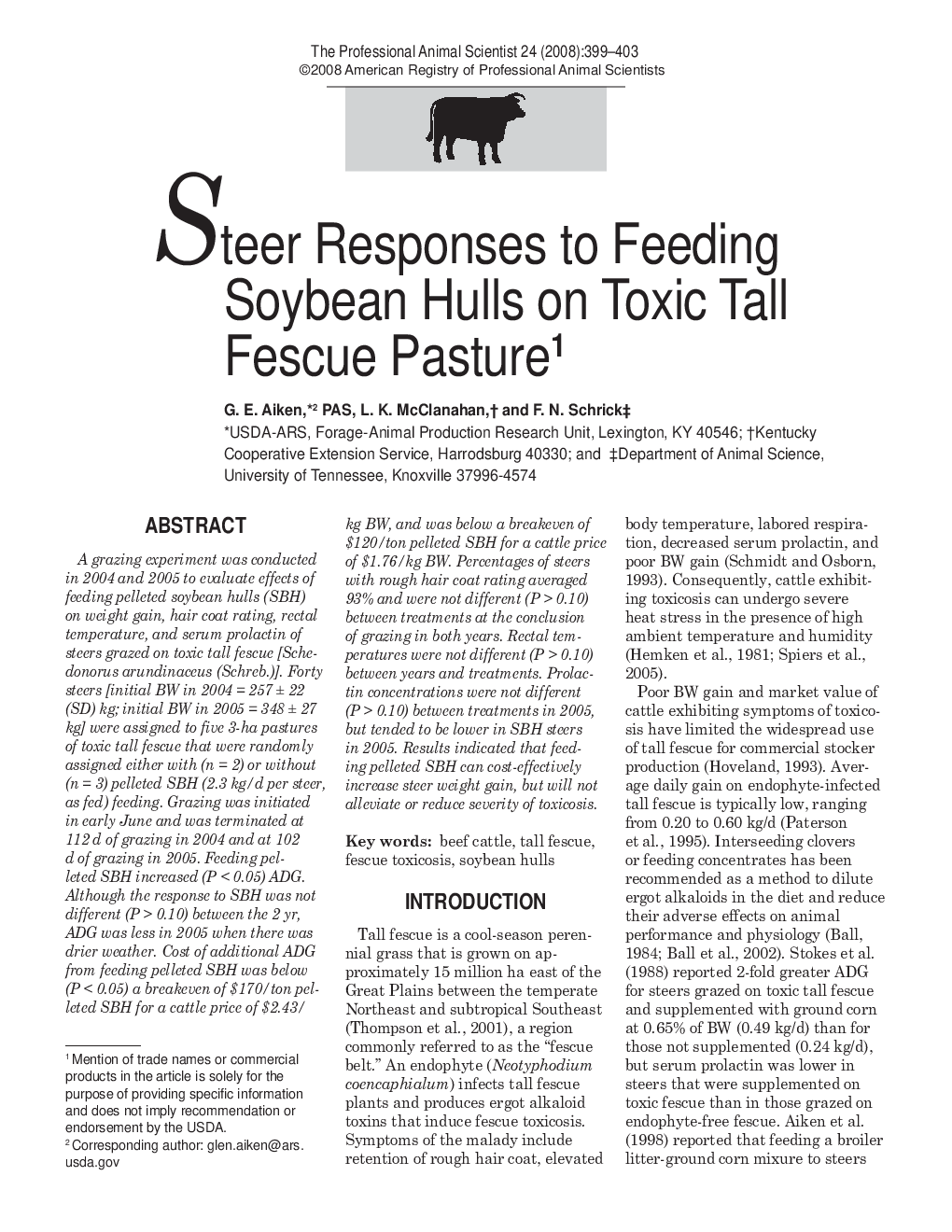| Article ID | Journal | Published Year | Pages | File Type |
|---|---|---|---|---|
| 2454263 | The Professional Animal Scientist | 2008 | 5 Pages |
Abstract
A grazing experiment was conducted in 2004 and 2005 to evaluate effects of feeding pelleted soybean hulls (SBH) on weight gain, hair coat rating, rectal temperature, and serum prolactin of steers grazed on toxic tall fescue [Schedonorus arundinaceus (Schreb.)]. Forty steers [initial BW in 2004 = 257 ± 22 (SD) kg; initial BW in 2005 = 348 ± 27 kg] were assigned to five 3-ha pastures of toxic tall fescue that were randomly assigned either with (n = 2) or without (n = 3) pelleted SBH (2.3 kg/d per steer, as fed) feeding. Grazing was initiated in early June and was terminated at 112 d of grazing in 2004 and at 102 d of grazing in 2005. Feeding pelleted SBH increased (P < 0.05) ADG. Although the response to SBH was not different (P > 0.10) between the 2 yr, ADG was less in 2005 when there was drier weather. Cost of additional ADG from feeding pelleted SBH was below (P < 0.05) a breakeven of $170/ton pelleted SBH for a cattle price of $2.43/kg BW, and was below a breakeven of $120/ton pelleted SBH for a cattle price of $1.76/kg BW. Percentages of steers with rough hair coat rating averaged 93% and were not different (P > 0.10) between treatments at the conclusion of grazing in both years. Rectal temperatures were not different (P > 0.10) between years and treatments. Prolactin concentrations were not different (P > 0.10) between treatments in 2005, but tended to be lower in SBH steers in 2005. Results indicated that feeding pelleted SBH can cost-effectively increase steer weight gain, but will not alleviate or reduce severity of toxicosis.
Related Topics
Life Sciences
Agricultural and Biological Sciences
Animal Science and Zoology
Authors
G.E. PAS, L.K. McClanahan, F.N. Schrick,
